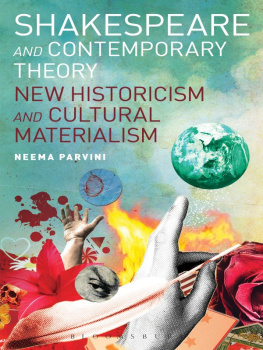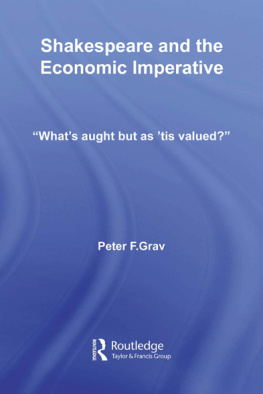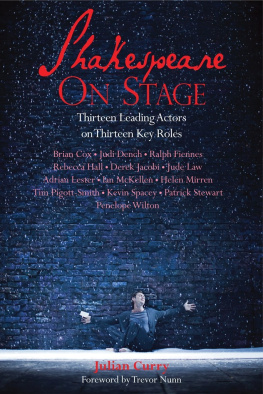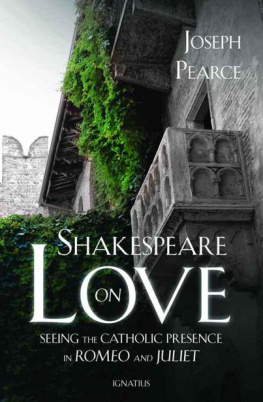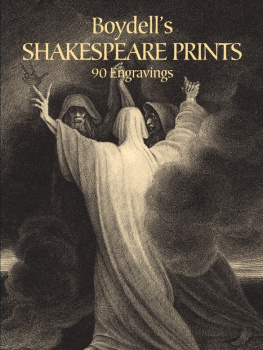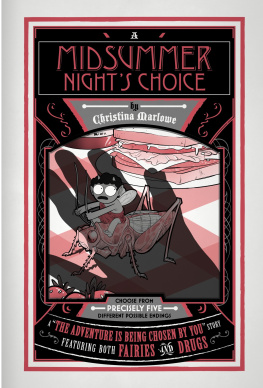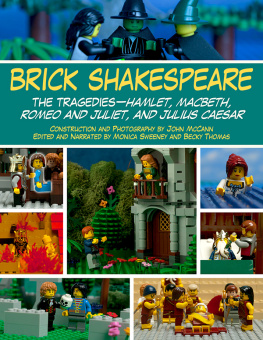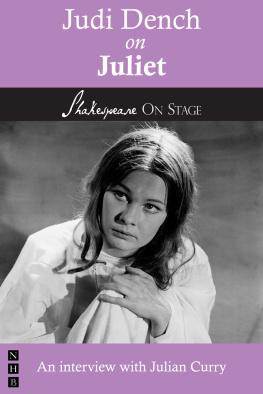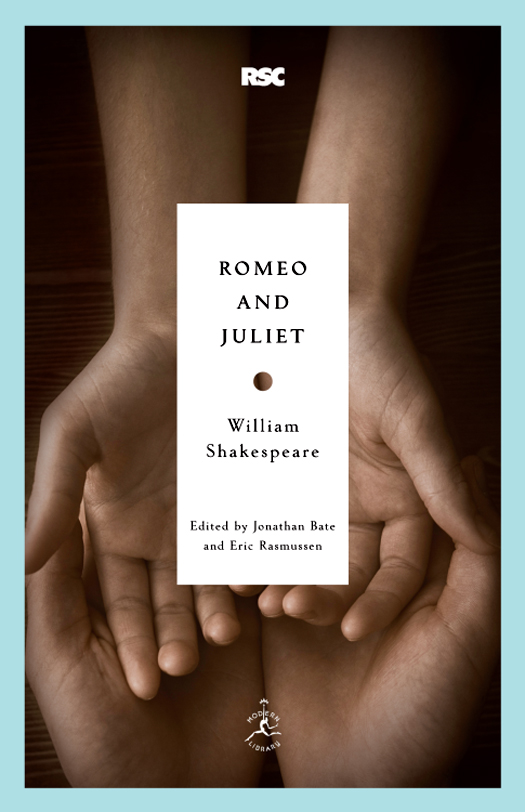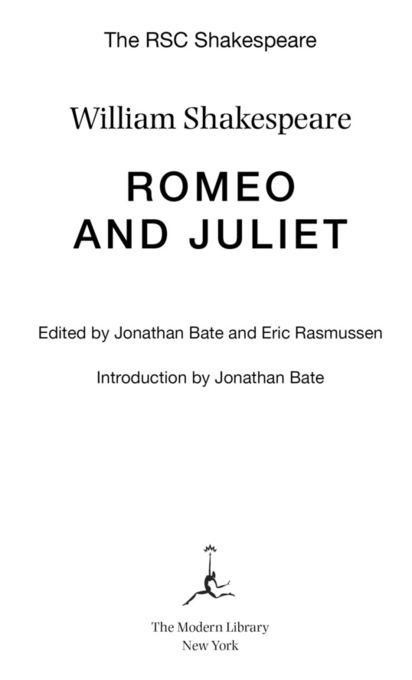The RSC Shakespeare Edited by Jonathan Bate and Eric Rasmussen
Chief Associate Editors: Hlose Snchal and Jan Sewell
Associate Editors: Trey Jansen, Eleanor Lowe, Lucy Munro,
Dee Anna Phares
Romeo and Juliet Textual editing: Eric Rasmussen
Introduction and Shakespeares Career in the Theater: Jonathan Bate
Commentary: Hlose Snchal
Scene-by-Scene Analysis: Esm Miskimmin
In Performance: Karin Brown (RSC stagings), Jan Sewell (overview)
The Directors Cut: Michael Attenborough
Playing Romeo: David Tennant
Playing Juliet: Alexandra Gilbreath
(interviews by Jonathan Bate and Kevin Wright)
Editorial Advisory Board Gregory Doran, Chief Associate Director,
Royal Shakespeare Company
Jim Davis, Professor of Theatre Studies, University of Warwick, UK
Charles Edelman, Senior Lecturer, Edith Cowan University,
Western Australia
Lukas Erne, Professor of Modern English Literature,
Universit de Genve, Switzerland
Akiko Kusunoki, Tokyo Womans Christian University, Japan
Jacqui OHanlon, Director of Education, Royal Shakespeare Company
Ron Rosenbaum, author and journalist, New York, USA
James Shapiro, Professor of English and Comparative Literature,
Columbia University, USA
Tiffany Stern, Professor of English, University of Oxford, UK
2009 Modern Library Paperback Edition Introduction copyright 2007, 2009 by The Royal Shakespeare Company All rights reserved. Published in the United States by Modern Library, an imprint of
The Random House Publishing Group, a division of
Random House, Inc., New York. M ODERN L IBRARY and the T ORCHBEARER Design are registered trademarks
of Random House, Inc. Royal Shakespeare Company, RSC, and the RSC logo are trademarks
or registered trademarks of The Royal Shakespeare Company. The version of
Romeo and Juliet and the corresponding footnotes that appear in this volume were originally published in
William Shakespeare: Complete Works, edited by Jonathan Bate and Eric Rasmussen, published in 2007 by Modern Library, an imprint of The Random House Publishing Group, a division of Random House, Inc. eISBN: 978-1-58836-841-6 www.modernlibrary.com v3.1
CONTENTS
INTRODUCTION
A PAIR OF STAR-CROSSED LOVERS
In
Romeo and Juliet, Shakespeare invented the idea of the teenager in love.
Many of his charactersthe thin and anguished Hamlet, the fat and jolly Falstaff, the sexy Cleopatra, the aged King Learhave associations even for people who have never seen or read his plays, but none more so than Romeo and Juliet. All around the world, the pairing of the names is synonymous with the idea of being young and in love. Juliets balcony has long been a tourist destination in Verona, even though she is a fictional character and there is no balcony in Shakespeares play (in the original text she appears at her window; it was only in the theater of David Garrick a century and a half after the play was written that the balcony was introduced as part of the set design). Innumerable allusions in popular culture and song attest to the couples status as archetypes of young loveWe were both young when I first saw youIm standing there / On a balcony in summer air (Taylor Swift, Love Story). When this song was performed at the 2008 Country Music Awards it was accompanied by couples in eighteenth-century costume re-enacting the ball from Romeo and Juliet, including the sequence in which the lovers link hands. At the end of the song a handsome Romeo in breeches appeared beside Ms.
Swift, the answer to every teenage girls dream. The process or condition of growing up; the growing age of human beings; the period which extends from childhood to manhood or womanhood; youth; ordinarily considered as extending from 14 to 25 in males, and from 12 to 21 in females. Thus the Oxford English Dictionarys definition of adolescence. Around the beginning of the Second World War, the new word teenager was coined for this phase of human life, but the idea that there was a distinct period between childhood and adulthood has a long history. In ancient Greece, Aristotle divided life into youth, middle age, and old age. In ancient Rome, Ovids Metamorphoses included a sustained comparison between the four seasons and the passage of human life under the auspices of Time, the devourer of all things.
In early Christianity, St. Chrysostom developed a six-fold division: infant, child, adolescent, young man, man of gravitas, old man. He suggested that each age had its own particular earthly miseries. Later writers, anticipating the famous speech by Jaques in Shakespeares As You Like It, added one further age of man (decrepitude, extreme old age, or second childhood). The elegance of the seven ages was their correspondence to the quasi-magical properties of the number seven. God may have created everything in six days, but there was also the seventh day on which he rested.
Both biblical and classical writers often ordered things in sevens, as with Jacobs prediction to Pharaoh of seven fat years, then seven lean ones. It was therefore widely believed that human life went in seven-year cycles. Sixteenth-century writers typically proposed the following pattern: the first age is infancy (from Latin infans, meaning unable to speak), then comes childhood, which lasts to the age of seven, then youth, which lasts till fourteen, then adolescence, lasting from fourteen to twenty-eight and characterized as the reign of concupiscence, which meant bodily and especially sexual appetite. Then comes virility or mans estate, which continues until the completion of the forty-ninth year. Old age sets in at fifty and lasts until death, if you are a believer in the six ages, or until decrepitude, if you prefer seven. Consider the Old Shepherds entrance line in The Winters Tale: I would there were no age between ten and three-and-twenty, or that youth would sleep out the rest, for there is nothing in the between but getting wenches with child, wronging the ancientry, stealing, fighting.
This suggests that Shakespeare, like many of his contemporaries, lumped together youth and adolescence into a single age of sexual indulgence, riot and high spirits, lasting fourteen years. This is where he locates Romeo and Juliet, along with the other young male blades in the play. Juliet, crucially, is on the threshold of her fourteenth birthday. Romeos age is not specified but he has clearly not reached that stage in the mid-twenties when a young male matures fully into mans estate. Tragedy is traditionally focused on the undoing of heroes of extreme masculinity or on powerful rulers who climb to the top of Fortunes wheel, then tumble to catastrophe.
THE FEARFUL PASSAGE OF THEIR DEATH-MARKED LOVE
The Irish poet W. B. B.
Yeats remarked in a letter that only two subjects can be of any lasting interest to a serious and studious mind: sex and the dead. He was not thinking about Romeo and Juliet at the time, but the play is both seriously and playfully interested in the connection between the drive whose end is the creation of new life and the confrontation that ends in the extinction of life. The same ardent, youthful energy that impels Romeo to Juliets bed leads him to fight with hot-blooded Tybalt. Death is the consequence of both the rivalry between the male gangs and the sexual attraction between Juliet and Romeo. The play contains some of Shakespeares most beautiful poetry, including such well-loved lines as a rose / By any other word would smell as sweet and But, soft, what light through yonder window breaks? / It is the east, and Juliet is the sun. Yet it also contains some of his most raucous bawdy wordplay.



